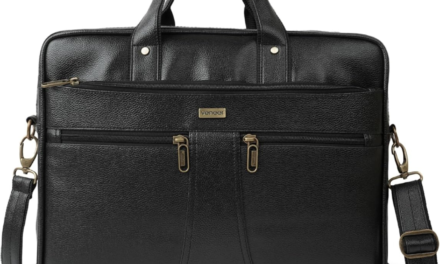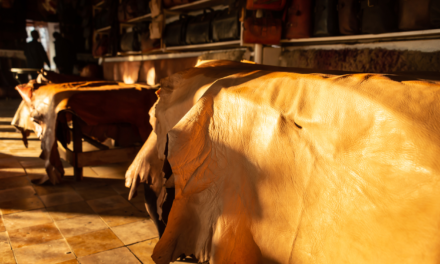The durability of synthetic leather compared to genuine leather depends on factors such as material quality, usage, and environmental conditions. Here’s a detailed comparison:
1. General Durability
- Synthetic Leather:
- Strength: Generally less durable than high-quality genuine leather.
- Resistance to Environmental Damage: Resistant to water, stains, and mild abrasion but can crack, peel, or degrade over time, especially with heavy use or exposure to extreme conditions.
- Lifespan: Typically lasts 2–5 years, depending on quality and usage. High-quality synthetic leather, such as advanced PU leather, may last longer.
- Genuine Leather:
- Strength: Extremely durable, especially full-grain leather, which can last 10–20 years or more with proper care.
- Resistance to Wear: Develops a patina over time, which adds character and protects the material. However, it requires regular maintenance to prevent cracking or drying.
- Lifespan: Properly maintained genuine leather can last decades.
2. Resistance to Water and Stains
- Synthetic Leather:
- Advantage: Naturally water-resistant and easier to clean. Spills and stains can often be wiped away with a damp cloth.
- Drawback: Prolonged exposure to water or humidity can weaken the adhesive layers, leading to peeling or delamination.
- Genuine Leather:
- Advantage: Untreated leather is absorbent and prone to water damage, but treated leather (with waterproofing products) can resist water and stains effectively.
- Drawback: Prolonged moisture can lead to discoloration, mold, or damage without proper care.
3. Resistance to Abrasion and Scratches
- Synthetic Leather:
- Advantage: Resistant to light scratches and scuffs. High-quality PU leather can handle moderate abrasion.
- Drawback: Over time, synthetic leather is prone to cracking and peeling, especially in high-stress areas or with frequent bending.
- Genuine Leather:
- Advantage: Naturally more resistant to wear and tear. Scuffs and scratches can often be buffed out or treated, and full-grain leather is highly resistant to damage.
- Drawback: Deep scratches or gouges may require professional repair.
4. Flexibility and Resilience
- Synthetic Leather:
- Advantage: Initially flexible and lightweight, making it suitable for fashion and furniture.
- Drawback: Flexibility diminishes over time, with cracking or brittleness likely after prolonged use or exposure to extreme temperatures.
- Genuine Leather:
- Advantage: More resilient and flexible over time. It softens and conforms to the user’s shape, enhancing comfort without compromising durability.
- Drawback: Requires conditioning to maintain flexibility.
5. Heat and UV Resistance
- Synthetic Leather:
- Advantage: High-quality synthetic leathers can be treated for UV resistance, but they are generally more sensitive to heat and sunlight.
- Drawback: Prolonged exposure to direct sunlight or high temperatures can cause discoloration, warping, or cracking.
- Genuine Leather:
- Advantage: Better natural resistance to UV rays and heat but can fade or dry out if exposed to harsh conditions over time.
- Drawback: Requires conditioning and care to maintain durability in extreme climates.
6. Maintenance Requirements
- Synthetic Leather:
- Advantage: Low maintenance; cleaning requires just a damp cloth and mild soap. Does not require conditioning.
- Drawback: Once damaged (e.g., peeling or cracking), it is difficult to repair or restore.
- Genuine Leather:
- Advantage: Can be restored or repaired when scratched, scuffed, or worn. Conditioning and polishing help maintain its appearance and durability.
- Drawback: Requires regular maintenance to prevent drying, cracking, and staining.
7. Cost vs. Durability
- Synthetic Leather:
- Advantage: Affordable and suitable for short-term use.
- Drawback: Shorter lifespan may lead to more frequent replacements, reducing long-term cost-effectiveness.
- Genuine Leather:
- Advantage: Higher upfront cost but offers better value over time due to its longevity.
- Drawback: Initial investment is higher, and maintenance costs should be considered.
8. Environmental Impact
- Synthetic Leather:
- Advantage: No animal products involved, appealing to vegan and ethically conscious consumers.
- Drawback: Made from non-biodegradable plastics like PU and PVC, which can degrade over time and release microplastics, impacting the environment.
- Genuine Leather:
- Advantage: Biodegradable and long-lasting, reducing frequent replacements.
- Drawback: Environmental concerns arise from animal farming and the tanning process, which may involve harmful chemicals.
Summary Table
| Feature | Synthetic Leather | Genuine Leather |
| Durability | 2–5 years, prone to peeling | 10–20+ years, develops patina |
| Water Resistance | Naturally water-resistant | Requires treatment for water resistance |
| Scratch Resistance | Resistant to light scratches | More resistant; scuffs can be repaired |
| Flexibility | Flexible but prone to cracking | Becomes more flexible over time |
| UV/Heat Resistance | Sensitive to UV and heat | Better natural resistance |
| Maintenance | Low maintenance | Requires regular care |
| Cost | Affordable | Higher upfront cost, better long-term value |
Conclusion
- Synthetic Leather:
- Best for budget-friendly, short-term use, or when water resistance and easy maintenance are priorities.
- Ideal for consumers seeking cruelty-free or vegan products.
- Genuine Leather:
- Offers superior durability and repairability, making it a better choice for long-term investment.
- Suitable for those willing to maintain and care for their products over time.
The choice between synthetic and genuine leather depends on your needs, priorities, and budget.
Hashtags
#SyntheticVsGenuineLeather #FauxLeatherComparison #VeganLeatherVsRealLeather #ArtificialLeatherAdvantages #SustainableLeatherChoices #LeatherMaterialComparison #SyntheticLeatherProsAndCons #GenuineLeatherVsFaux #EcoFriendlyLeatherOptions #LeatherAlternativesExplored







